reina suyeon mun reimagines korean low table into microarchitecture to confront silences
Reina Suyeon Mun reinterprets traditional Korean table
Reina Suyeon Mun’s ‘SilenceTop’ is an interactive microarchitecture furniture object that constructs an alternate relationship between objects, space and humans, around the subject of silence. It reframes the landscape of domestic spaces by furnishing and confronting silences in various scenarios. A reimagination of the conventional wooden South Korean low table typically used for serving tea and coffee, ‘SilenceTop’ utilizes motors and sensors in its aluminium, brass and plexiglass form.
The emerging transdisciplinary practice of microarchitecture blends the two related fields of furniture and architecture. As much as furniture is concerned with human conditions and the spaces it is situated in, so is architectural design. ‘SilenceTop’ explores how an object can converge the scales played in both fields, by creating a new mode of participation to form an alternate spatial relationship between the microarchitecture object and the people. The project constructs interactive responses to an abstract subject of silence and creates an intriguing, unconventional space between a distinct furniture object and architectural space.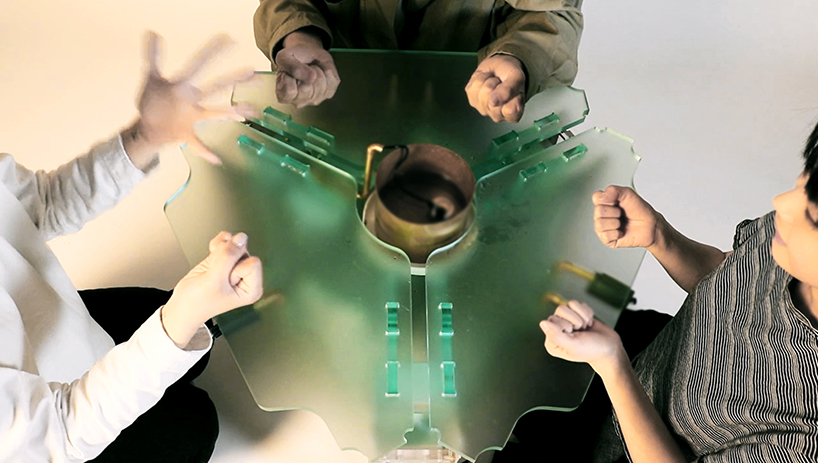
all images courtesy of Reina Suyeon Mun
‘SilenceTop’ is interactive microarchitecture
Reina Suyeon Mun designs the table’s radial spatial configuration to accommodate up to three people at once. Its dimension is developed through investigating sensor technologies, conditional interactivity, and design with proxemics. Edward’s proxemic theory deals with the amount of space that is found necessary to allow optimal conversation between people in different circumstances. As a result, the designer creates a distance of 75cm between people sitting around the ‘SilenceTop’.
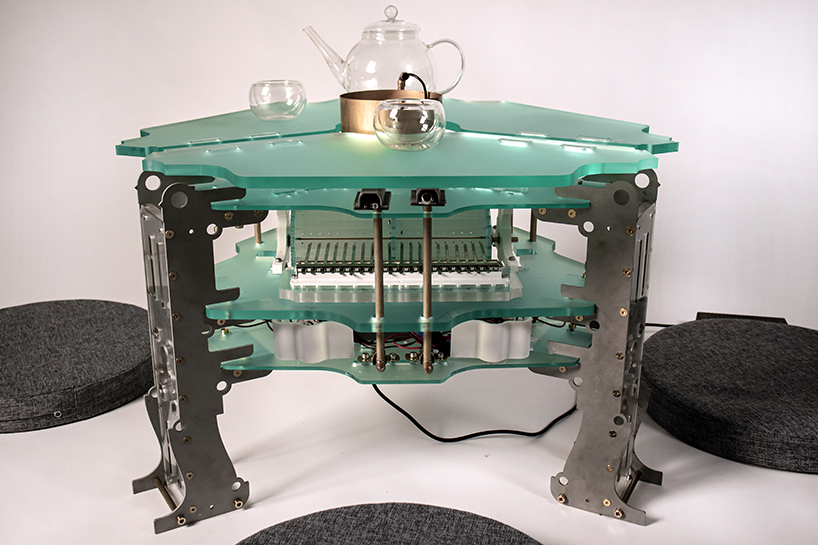
the korean low table is typically used for serving tea and coffee
‘silenttop’ confronts and embraces silence with noise and mist
‘Silence does not exist in a distinctive form. It gets recognized when the apparent social activities and sound fade out’, says Suyeon Mun. ‘The reading of silence varies from person to person based on their cultural background and the circumstance it is situated in. It can be regarded as a sign of respect to one while bringing awkward and anxious emotions to the others’.
‘SilenceTop’ has two modes, each responding differently depending on the number of people socialising in its vicinity. Social mode, which confronts silence, is active when two or more people sit around the table. Here, it remains in a stable state until silence persists for a certain amount of time ‘and awkwardness kicks in’. It then intervenes by plucking a kalimba to sound low-pitch semitone tines, which may induce anxiety and annoyance emotions to some but also appear likeable to others. The only way to stop the semitones is to open a conversation again. Alternatively, lone mode is active when a single person is in the vicinity, or nobody is in the same space. Here, ‘SilenceTop’ embraces silence, and regards it as a need to last and be appreciated. When silence occurs, the object generates mists to mediate lone silence, which permeates the room over time to amplify an atmospheric and serene ambiance.
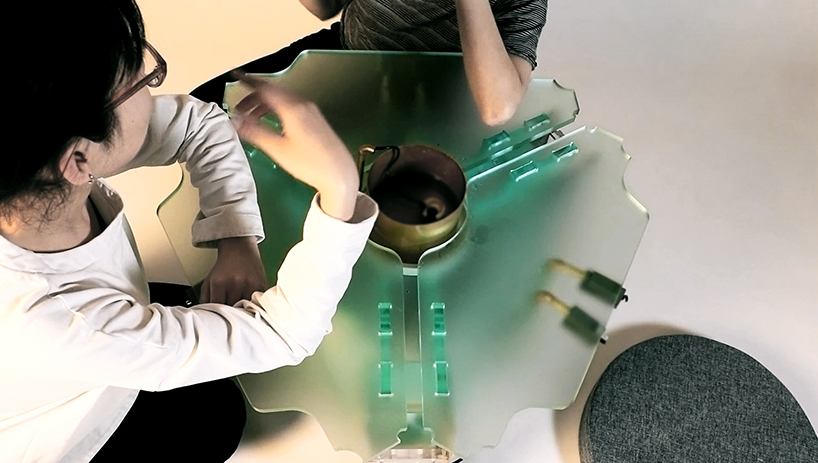
the table allows for both intimate and casual conversation
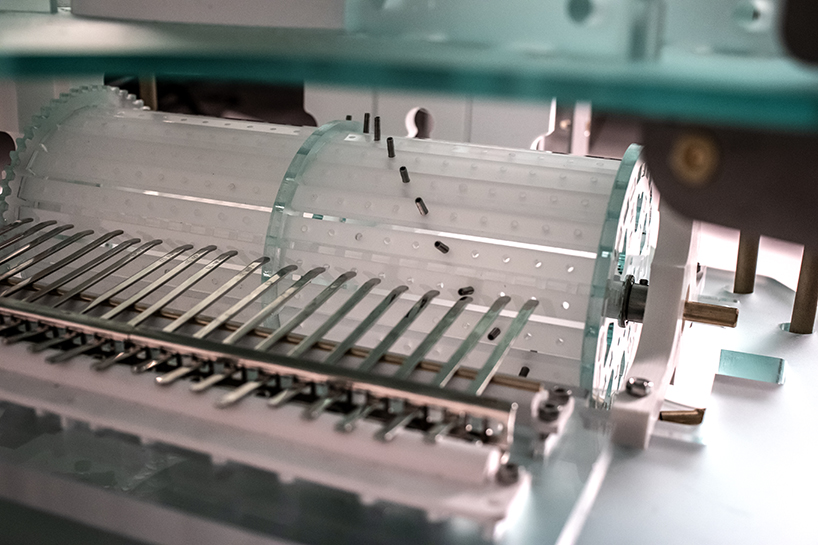
a kalimba sounds semitone tines in social mode
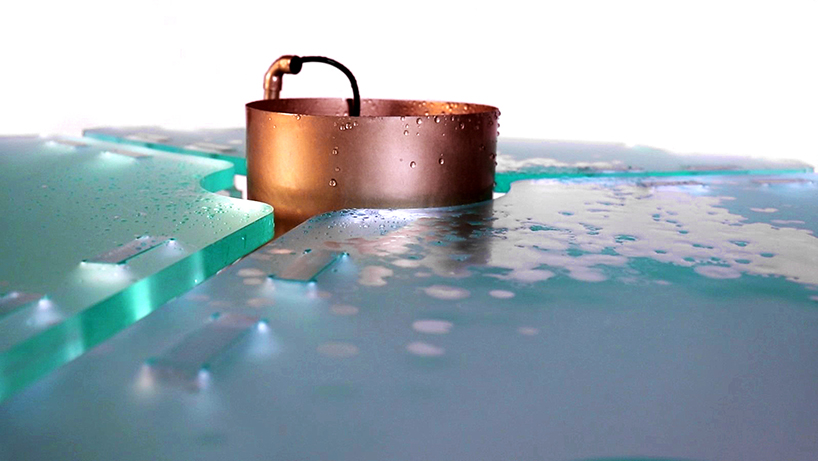
lone silence mode permeates relaxing mist



